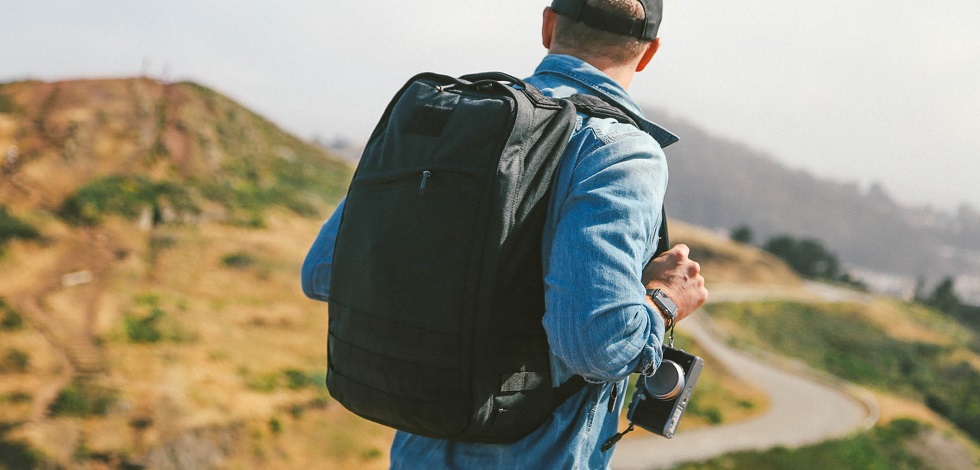
From Carryology:
While no bag is indestructible, a bomber or ‘bombproof’ pack comes close. Routinely built with mil-spec materials, construction of a bomber pack needs to be tough enough to handle repeated abuse in a host of onerous and, at times, unpredictable environments.
GORUCK have built their formidable reputation on creating some of the toughest bags in the game. Co-founded by a Green Beret, lugged by soldiers, and carried by thousands who endure their GORUCK Challenge events, it’s plain to see they know what it takes to achieve the ‘bombproof’ stamp of approval. So we asked GORUCK to share their expertise on important elements that go into building their bomber packs…
Double Stitching
With our final seams and other areas of high pressure we employ two stitch passes. This means that you go around the seam two times. That way, if a stitch breaks, the bag will still hold. Two lines of stitching on top of each other gives added support, instead of one line of stitching that is easily broken.
Other brands might do this once because it’s quicker, but going around twice keeps the bag together for longer. These double seams occur around your panels. The back panel, twice around. The front panel, twice around. At the shoulder straps we do two seams at the toe so that your toe doesn’t split out. Our philosophy is two is one, one is none.
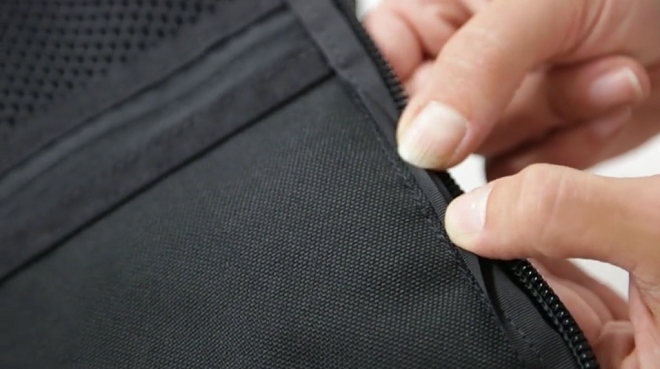
Bartacking
Bartacking is a specific style of stitching done on a specific machine. The bartacker is set up to create a certain pattern which helps to hold things in. Most of our seams have a certain stitch length where there might be seven or eight stitches in an inch. A bartack has 42 stitches in an inch. The stitches happen across and then come back through in vertical stitches to combine all those and make it super strong and tough. It’s used in small areas of high pressure such as MOLLE, thumb loops, batwings at the point of intersection for Cordura and webbing, handles at points of big pressure, as well as where the port might open. If you apply too much pressure the CORDURA will rip before the bartacking does. Think of your bartacks as your best line of defense for heavy carrying. Our material is bombproof. Our bartacks are even more bombproof.
“Our philosophy is two is one, one is none.”
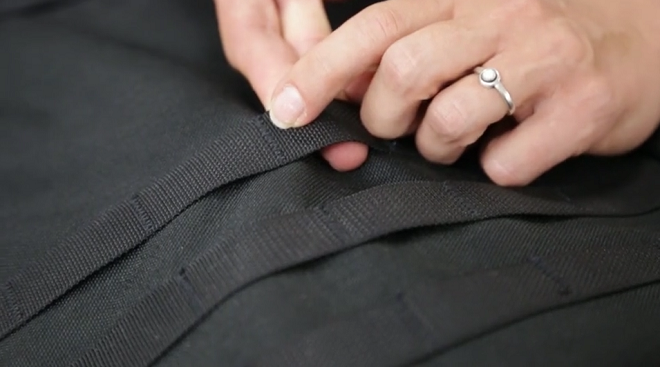
Back Tacking
Shoulder straps are put in with the friend of bartacks which is back tacking. Back tacking is used because it’s a longer distance and because bartacking adds some thickness and we don’t want any more thickness on the shoulder straps than we already have. Back tacking involves sewing, stopping, backing up to where you were, continuing forward, backing up again, and continuing forward, allowing you to reinforce without adding bulk.
“Think of your bartacks as your best line of defense for heavy carrying.”
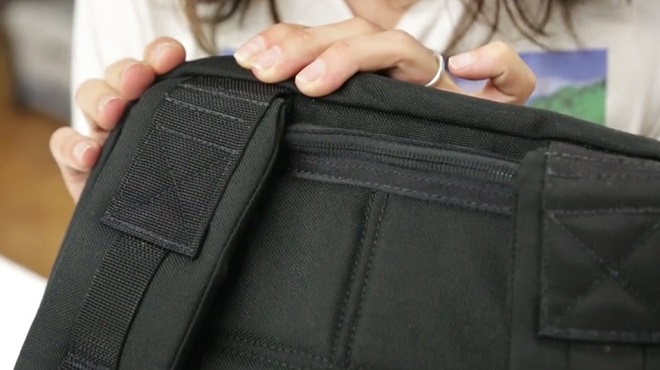
Seam Allowance and Stitch Length
Seam allowances and stitch lengths are adjustments that the operator can make to their machine to get the job done. Seam allowance is how far from the stitching to the edge of your material you perform the stitch at. We ask our machine operators to do this at 1cm. A good seam allowance will help to hold everything together without being too wimpy at the end or without being too deep and changing the look of the bag.
“Seam allowance is how far from the stitching to the edge of your material you perform the stitch at.”
The second part of that is stitch length. Too big and dirt can pass between the stitches and things can break; you’ve got an area that doesn’t have something holding it together. Too tight of a stitch length and you will actually perforate as you go, separating materials and losing them. We do seven to eight stitches per inch, a perfect amount to keep things neat and tight and to hold everything in place without ripping and without allowing dirt to pass through.
Some brands will cut corners in both of these steps. The seam allowance can be difficult to maintain because of thicknesses, or the machine doesn’t want to do it. Some brands will just let the machine dictate it because it’s faster and cheaper. The same thing with the stitch length. A larger stitch length lets you sew faster. We don’t do that. We are not about speed, we’re about quality.
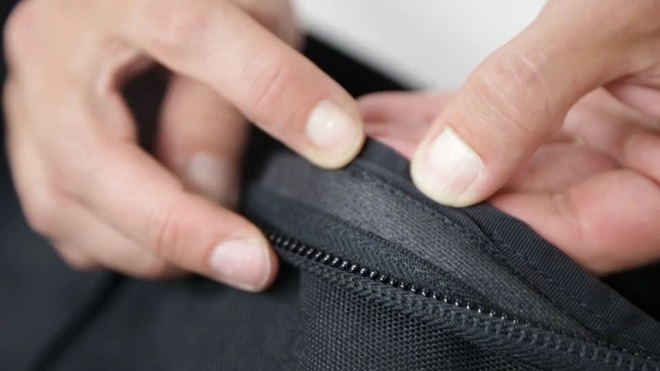
Shoulder Strap Foam
When you are rucking, the shoulder straps take the majority of the weight, so we spend extra on the best foam on the market. The shoulder straps are the most intimate part on your bag. They hug you, they make the connection with you. Your back is on the panel but your shoulder straps do the work. You don’t want foam that will compress over time and reduce the comfort of the straps. When you pinch our strap foam it gives you a little bit of resistance and maintains that foam feel. We spent a lot of time looking for the perfect foam. This foam is not only multilayered for basic purposes and longevity, but we also make sure that it is the best foam out there for what we expect it to do. This foam is going to last you a lifetime.
“We are not about speed, we’re about quality.”
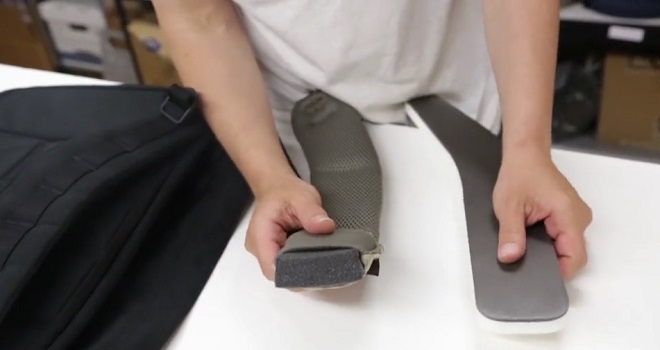
False Bottom
One of the best things about our bombproof laptop compartment is the false bottom. Of course we know there’s a framesheet, good foam, all kinds of things to protect your laptop. But we make sure your laptop is well taken care of by including that false bottom which provides some space between the actual bottom of the laptop compartment and the floor. If you drop the bag, the laptop doesn’t make contact with the surface it has fallen onto. Now this construction is time-consuming, it is difficult, it is an extra overbuild step that many people might not care to do, but we’re going to get it done because we want to make sure that your belongings are well taken care of.
“One of the best things about our bombproof laptop compartment is the false bottom.”
We proudly overbuild all of our gear. We want it to last for you; we’re proud of what we’ve done and who we are. We don’t view overbuilding as a cost, we view it as an investment.
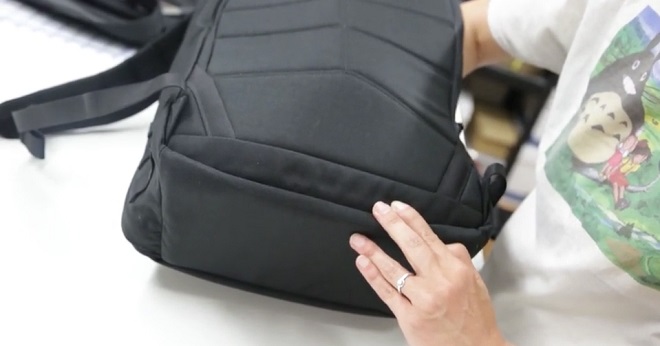
More from Carryology
hgh apotheke kaufen
References:
git.influxfin.com
hgh kaufen legal
References:
http://www.bitsdujour.com
For an SQ injection, you’ll be injecting just under the skin into fatty tissue.
A most well-liked spot for this kind of injection is
the gentle tissue of the abdomen. When doing an IM injection, it’s always greatest to maintain your
syringes separate from your needles. Each of those products ought
to be sealed of their package wherever possible. This not solely gives you most hygiene but in addition makes the process
less complicated.
Most knowledge on the long-term results of anabolic steroids in people
come from case reports somewhat than formal epidemiological research.
Critical and life-threatening antagonistic results could additionally be underreported, particularly since they might
happen many years later. One animal examine discovered that
exposing male mice for one fifth of their lifespan to
anabolic steroid doses comparable to those taken by
human athletes caused a excessive frequency
of early deaths 82. Anavar is a synthetic by-product of testosterone, belonging to the
category of anabolic steroids. It works by binding to androgen receptors within the body, just like
testosterone. This binding action promotes protein synthesis, which is essential for muscle growth and restoration. Anavar has a
singular capacity to boost the efficiency of protein synthesis, making it significantly effective for building lean muscle mass without inflicting important water retention.
Androgen receptors exist in the tissues of the larynx and muscular tissues involved in the vocal perform of humans.
Females are not naturally exposed to this magnitude of androgen publicity, and therefore don’t develop these vocal modifications naturally.
The introduction of exogenous androgenic anabolic steroids, nonetheless, may cause this
aspect effect to manifest in girls who use anabolic steroids.
This side impact is, in fact, dose and duration dependent,
and is generally gradual to manifest with early warning symptoms.
The first of these is a noticeable cracking and hoarsening of the voice[1].
These adjustments are usually equivalent to the same modifications in pubescent
males.
Another widespread mode of anabolic steroid misuse is known as “pyramiding”, which generally includes taking anabolic steroid in a cycle of six
to 12 weeks, tapering gradually quite than beginning and finishing a cycle
abruptly. At the start of a cycle, the particular
person begins with low doses of the anabolic steroid being stacked after which slowly will increase the doses.
In the second half of the cycle, the doses are slowly
decreased to zero. This is sometimes followed by a second cycle by which the
person continues to coach however without anabolic steroid.
Steroid users imagine that pyramiding permits the body time to adjust to the excessive doses, and the drug-free cycle permits the body’s hormonal system time to recuperate 74.
In small doses narcotics have medical makes use of that embrace relieving extreme pain and inducing sleep.
Nonetheless, narcotic overdose is a medical emergency and
might result in respiratory despair and even dying. The major medical
use of these compounds is to treat situations similar to Consideration Deficit Hyperactivity Disorder (ADHD), bronchial asthma,
narcolepsy, and weight problems.
This is because the steroid will increase the manufacturing of low-density lipoprotein (LDL), which is the
“bad” sort of cholesterol. High ranges of LDL have been linked
with an elevated danger of heart illness. Such a cycle produced significant levels of mass without androgenic results, enabling customers to keep their hair
intact and reduce the chance of male pattern baldness (androgenetic alopecia).
LH stimulates testosterone production and, along side FSH, regulates spermatogenesis.
Testosterone, and its estrogenic metabolite estradiol, exert adverse suggestions
on the hypothalamus and pituitary to suppress their very own synthesis (173, 174).
Estradiol in particular is awfully potent at suppressing gonadotropin secretion as,
on a molar basis, it is estimated to be 200-fold more
potent than testosterone in doing so (175). Consequently, exogenously administered AAS may also exert negative feedback, thereby suppressing testicular testosterone manufacturing and spermatogenesis.
Primobolan is used to deal with muscle losing ailments in some cases;
however, typically only in mild cases or where
an immune boost is a benefit. This steroid just isn’t
going to pack on mass like Anadrol or Deca Durabolin and most men will not have a lot use for it in an off-season bulking cycle.
Women are far more sensitive to anabolic steroids and a little of a mild anabolic steroid can go a long way.
Just as important, most girls usually are not looking to achieve 30lbs
of weight in a single day. Small, moderate will increase in weight can typically be remodeling on their own. Keeping the gentle nature in thoughts,
most males who use this steroid for a true off-season cycle might be disappointed.
References:
PedsElite